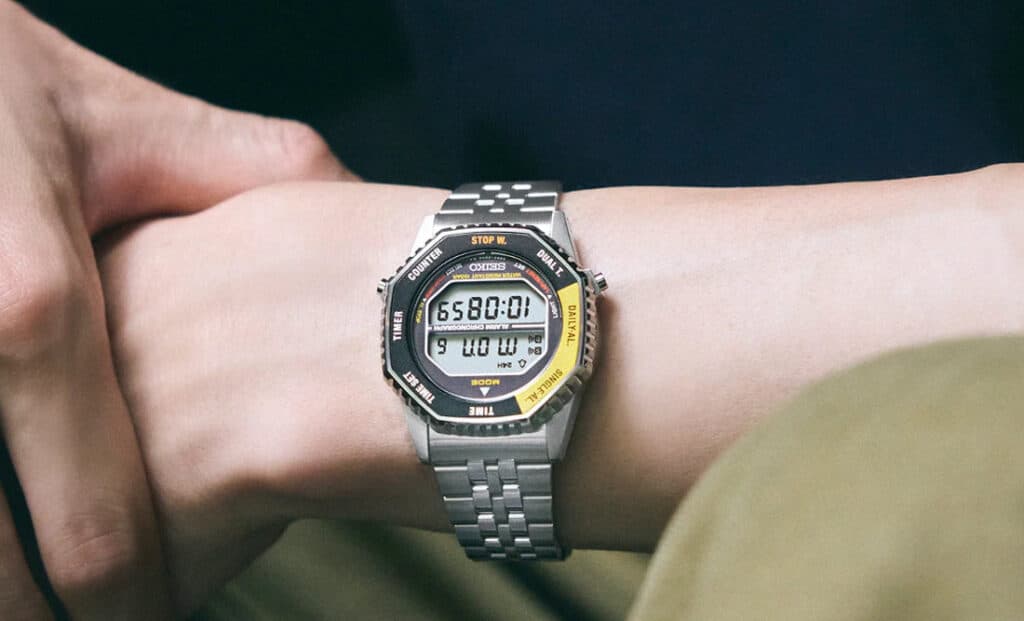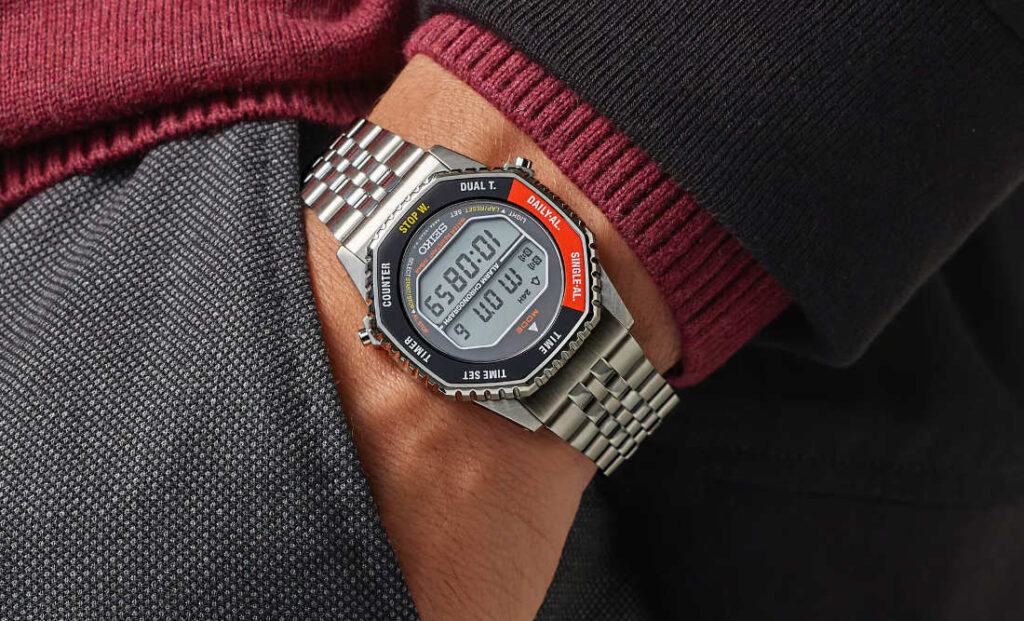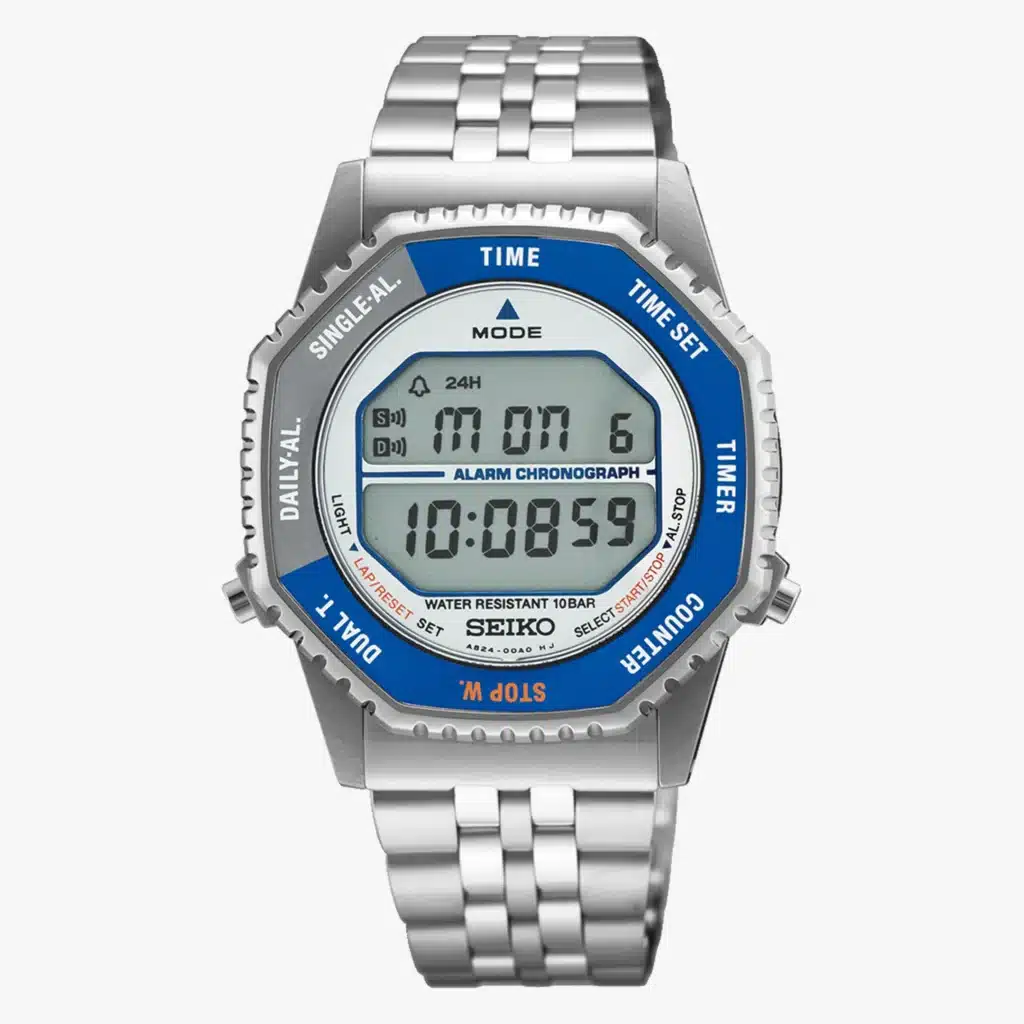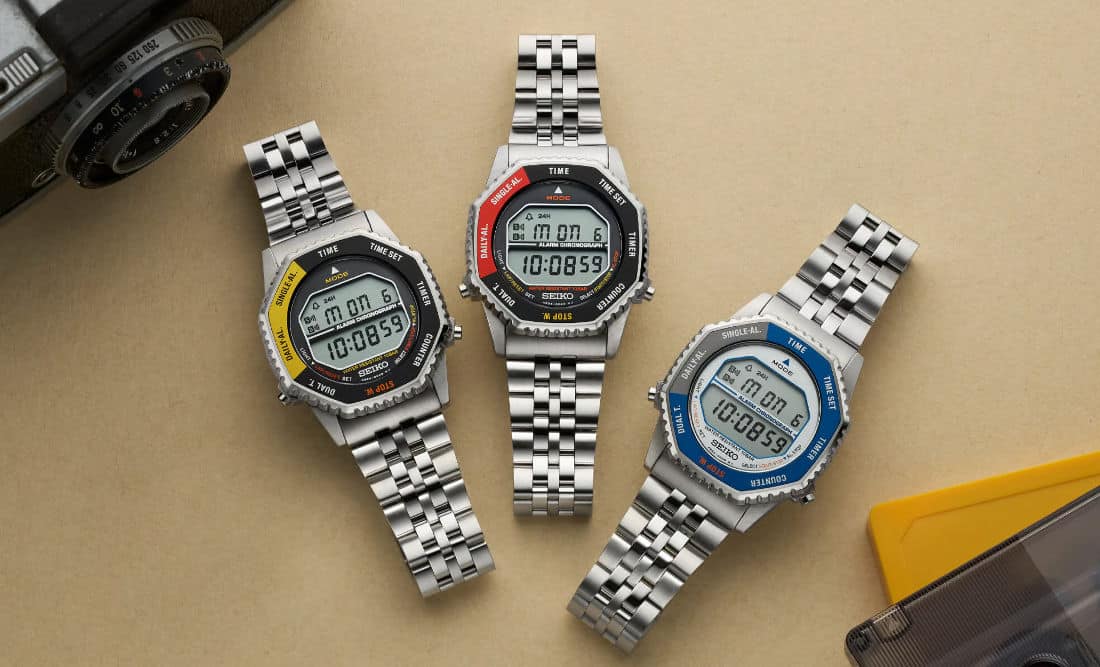I never thought I’d see Seiko releasing a modern digital watch that actually caught my attention. I’m thinking about how much I dislike those newer digital Tuna models, for example. For a brand that helped define what digital watches could be in the ’70s and ’80s, they’ve spent most of the modern era acting like that chapter never happened. Believe me though … people have been wanting this for a while.

So as a bit of a space and aviation geek, this one caught me off guard: the A829 Seiko Rotocall, a legitimately quirky, astronaut-approved relic from 1982. It’s back—and not as a limited drop, but as a full-time addition to Seiko’s catalog.
If you’ve ever handled a digital watch and found yourself reflexively pressing random buttons just to figure out how to switch modes, the Seiko Rotocall was—and still is—a smarter way to do things. The main hook here is the eight-sided rotating bezel, each facet labeled with a function: time, chronograph, alarm, GMT, countdown, and so on. Whichever side you align with the 12 o’clock “Mode” label becomes your active function. Two pushers at 4 and 8 o’clock do the adjusting. No nested menus (god I hate menus), no long-press mystery logic—just physical orientation.

That’s probably why astronauts took to it. The original Rotocall made more than a few trips to space, earning the nickname “Astronaut,” and this reissue stays surprisingly close to that legacy. The new case mirrors the more angular A829-A6029 variant, and at 37mm wide, 10.6mm thick, and 43.5mm lug-to-lug, it should wear like something straight out of that era. The lugs are brushed now instead of polished, and water resistance clocks in at a very welcome 100 meters.
Seiko calls the bezel a “rotary switch,” but it doesn’t feel like tech-speak. It’s tactile, functional—intuitive in the way a good diver’s bezel is. The eight modes include two alarms, a 1/100th chronograph, a counter, a countdown timer, and a separate time zone display (YES). These features make me think this watch might make its way into our list of our favorite pilot watches you can read here. It’s still quartz, still digital, and still rooted in that early-’80s moment when digital didn’t mean disposable.

You get a steel five-row bracelet with fitted end links (a functional upgrade from the vintage straight-end setup) and an extra NATO strap in the box. Small touch, but appreciated—especially since this feels like a nylon-strap kind of watch most days.
Color choices all pull from original references: SMGG19 has a black dial with red bezel accents; SMGG17 swaps the red for yellow and reverses some of the dial text colors; and SMGG21 goes full throwback with a light gray dial, blue and gray bezel, and orange accents.

Pricing for the new Seiko Rotocall is £480 in the UK, which roughly converts to $640–650. A little expensive if you ask me. No word yet on official U.S. pricing, but more importantly, this isn’t a limited edition—which could signal that Seiko’s not done with digital just yet. Fingers crossed.

I wouldn’t call this a shot at Casio so much as a quiet return to form—Seiko reclaiming a slice of its own overlooked history, and doing so without irony. I’m loving this. The blue/grey variant is my favorite and would be my pick. I’d be curious about messing with one, since I’ve never used this bezel/feature system before. Fingers crossed. I’m hoping we get more information about U.S. pricing and availability soon.

Co-Founder & Senior Editor
Michael Peñate is an American writer, photographer, and podcaster based in Seattle, Washington. His work typically focuses on the passage of time and the tools we use to connect with that very journey. From aviation to music and travel, his interests span a multitude of disciplines that often intersect with the world of watches – and the obsessive culture behind collecting them.

I was gifted the black and red one in 1983 with a rubber strap. Was $150 or $175. Rotating bezel worked flawlessly. Bought a minty one on ebay a few months ago that works flawlessly, even the light!